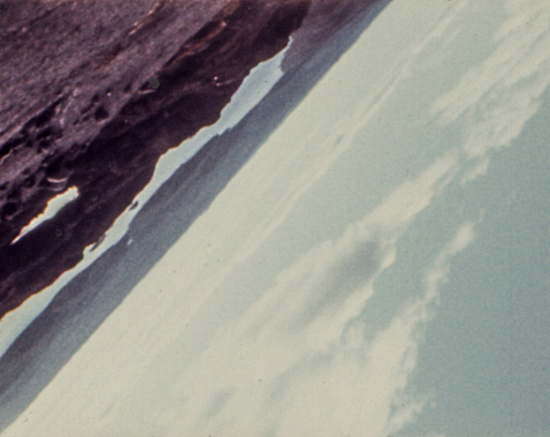On May 27, 1969, Michael Snow was one of four performers to participate in the premier of Steve Reich’s pioneering work of process music, Pendulum Music, at the Whitney Museum of American Art. Alongside James Tenney, Bruce Nauman, and Richard Serra, Snow swung the long cable of a microphone back and forth over an upturned loudspeaker, making howls of feedback with each pass, drifting out of phase with the swung tones of the other three performers.
Just under forty-five years later, the four founders of the London Contemporary Music Festival – Aisha Orazbayeva, Lucy Railton, Sam Mackay and Igor Toronyi-Lalic themselves swung back and forth over four loudspeakers for a performance of Pendulum Music for the very first edition of the London Contemporary Music Festival at Bold Tendencies in Peckham.
The London Contemporary Music Festival has come along way since that first week’s festival in a South London carpark. But this weekend the festival renews its connection to Michael Snow, artist, film-maker, composer, performer, with a screening of his groundbreaking 1971 film, La Région Centrale
Since his groundbreaking 1967 film Wavelength, Snow has been considered one of the most significant contributors to a movement known as ‘structural film-making’, a term coined by P. Adams Sitney in his book, Visionary Film. Citing the work of Snow, alongside Ernie Gehr, Tony Conrad, George Landow, Hollis Frampton, and Joyce Weiland, Sitney wrote, “Theirs is a cinema of structure in which the shape of the whole film is predetermined and simplified, and it is that shape which is the primal impression of the film.
“The structural film insists on its shape,” he continued, “and what content it has is minimal and subsidiary to the outline. Four characteristics of the structural film are its fixed camera position (fixed frame from the viewer’s perspective), the flicker effect, loop printing, and rephotography off the screen. Very seldom will one find all four characteristics in a single film, and there are structural films which modify these usual elements.”
But Snow was also an accomplished musician. He played piano with Toronto jazz groups like Ken Dean’s Hot Seven. Moving to New York, in the 1960s he collaborated with the likes of Milford Graves, Steve Lacy, and Pharoah Sanders. His sound installation, Hearing Aid, with an electric metronome and four tape recorders, was first installed at the Kitchen in New York in 1976 before being further exhibited internationally.
Ahead of its screening at LCMF this Sunday, I wrote to Snow to ask him about some of the background context that lay behind and the ideas that animated La Région Centrale. The following was his response:
La Région Centrale belongs to a family of my films which feature camera movement.
The first of these, Wavelength, made in 1967, is built on a slow (45-minute) zoom. I then became interested in featuring panning, did a kind of sketch film titled Standard Time, which is all camera-on-a-tripod panning movement. Then I did the more formal <––> (spoken as "Back and Forth").
These films were each shot in interiors, rectangular rooms, and I became interested in extending what I’d learned about panning into open, non-enclosed space. I started to consider how a landscape film could be made that would be truly “film” but would equal the effects of the great landscape paintings. I gradually envisaged a film of an exterior “scene” that would be represented by spherical or arc panoramas at various speeds. The curved camera motion relates to the motion of the earth, the moon and the planets.
I imagined circular camera movements that were continuous, but I found that these curved pans could not be made by available machinery. I realized that I’d have to make a tripod capable of 360-degree turns which did not photograph what was holding the camera or moving it.
I had the great luck to meet Pierre Abbeloos, who was a technician at the National Film Board of Canada in Montreal. He solved how to make the “tripod” do what we wanted, and he constructed it. The manual controls were basic (spherical panning, tilting and rotation and zoom), all at speeds of 1 to 10 (slow or fast). I “drove” the camera. I had spent about two years imagining the movements and tried to refer to these notes, but felt more and more relaxed as time passed, “playing the machine.” I could not see what the camera saw, so you can imagine the excitement when several days later we saw the results at the lab in Montreal. Abbeloos had made a tape-recording system that would instruct the machine to move the selected way, but we didn’t have the time to use it during the week of shooting on site and all the “instructions” to the machine were done by me, mostly “by hand.”
La Région Centrale by Michael Snow screens this Sunday, 16 December, at the London Contemporary Music Festival


